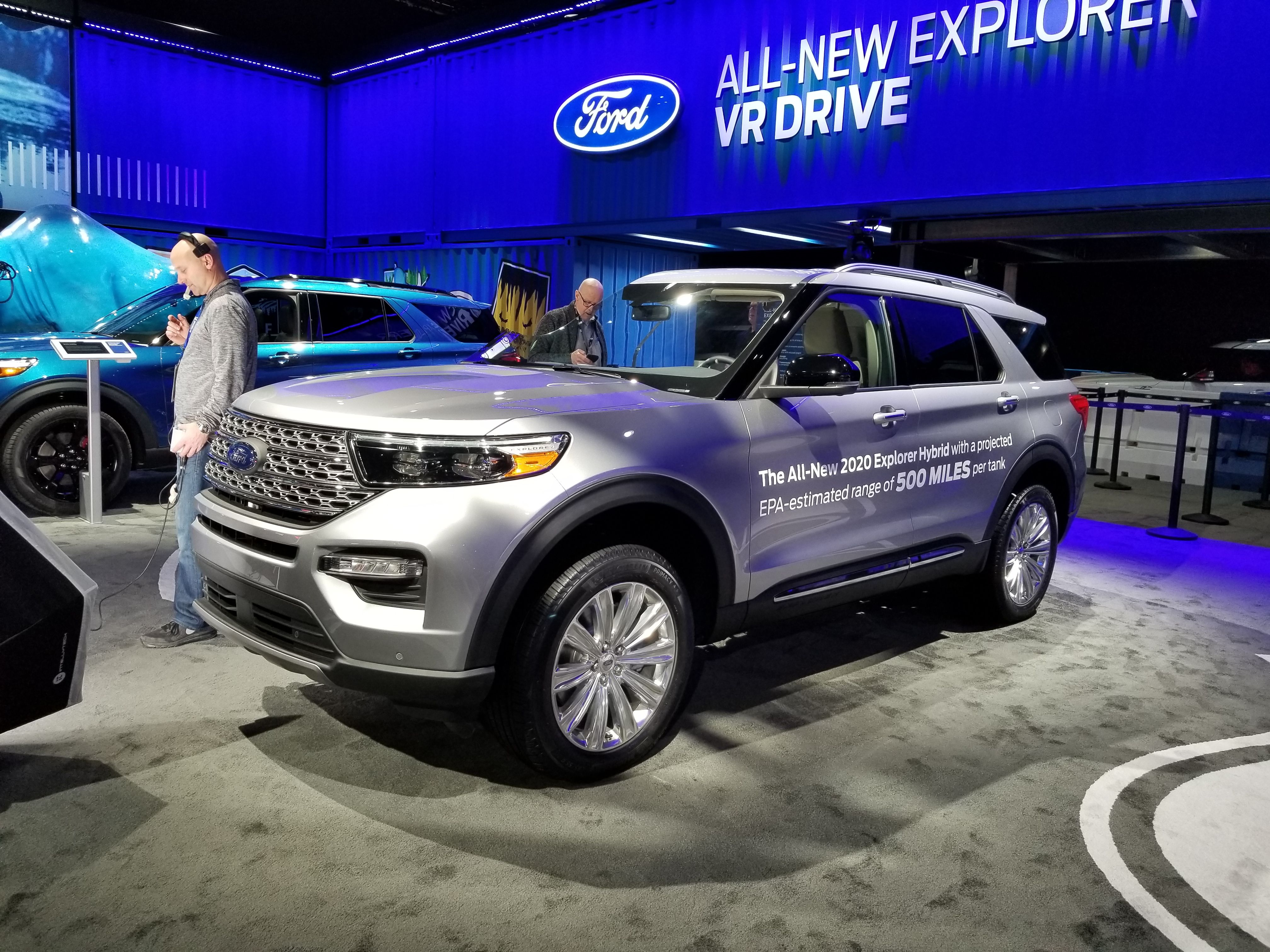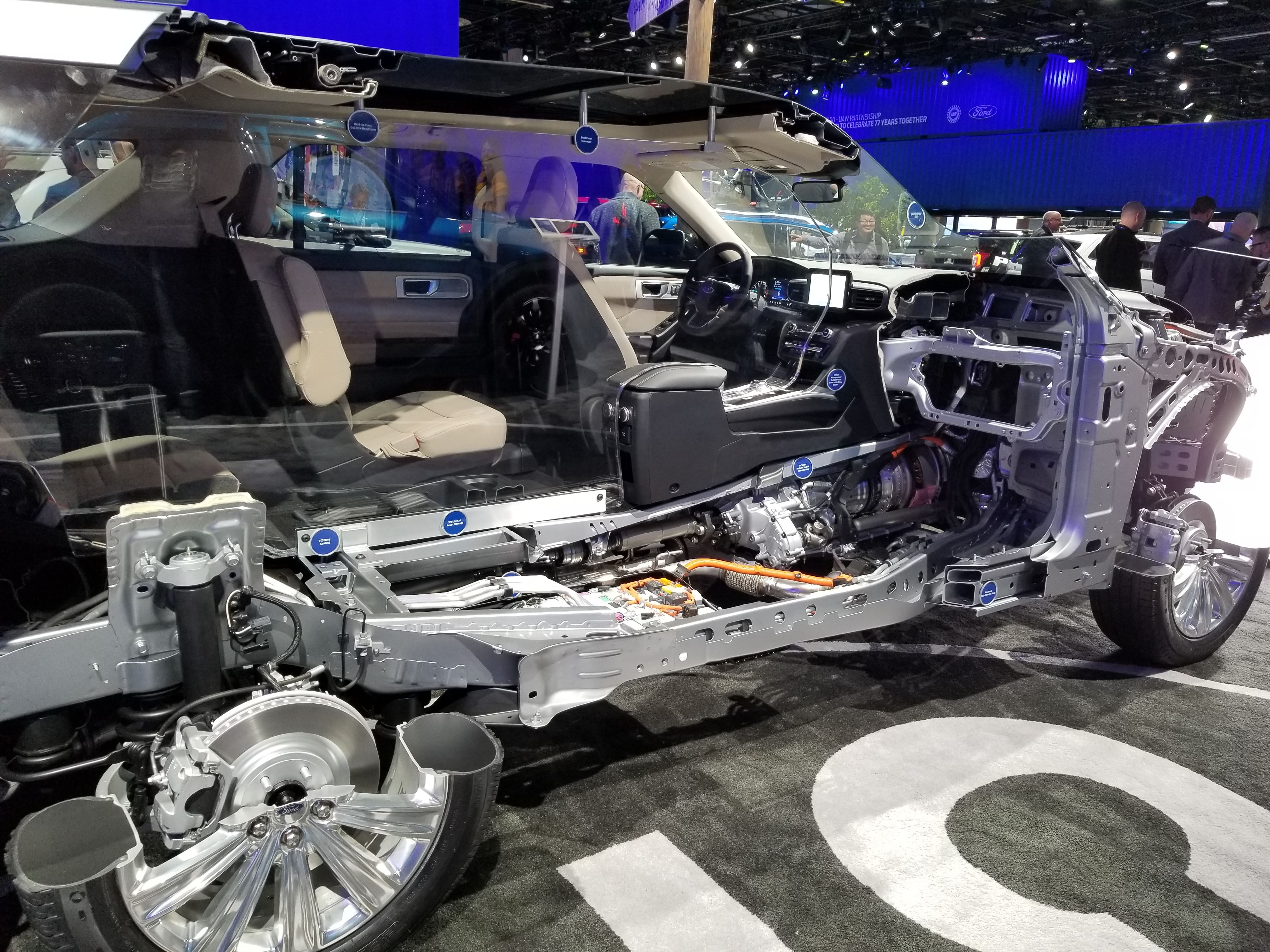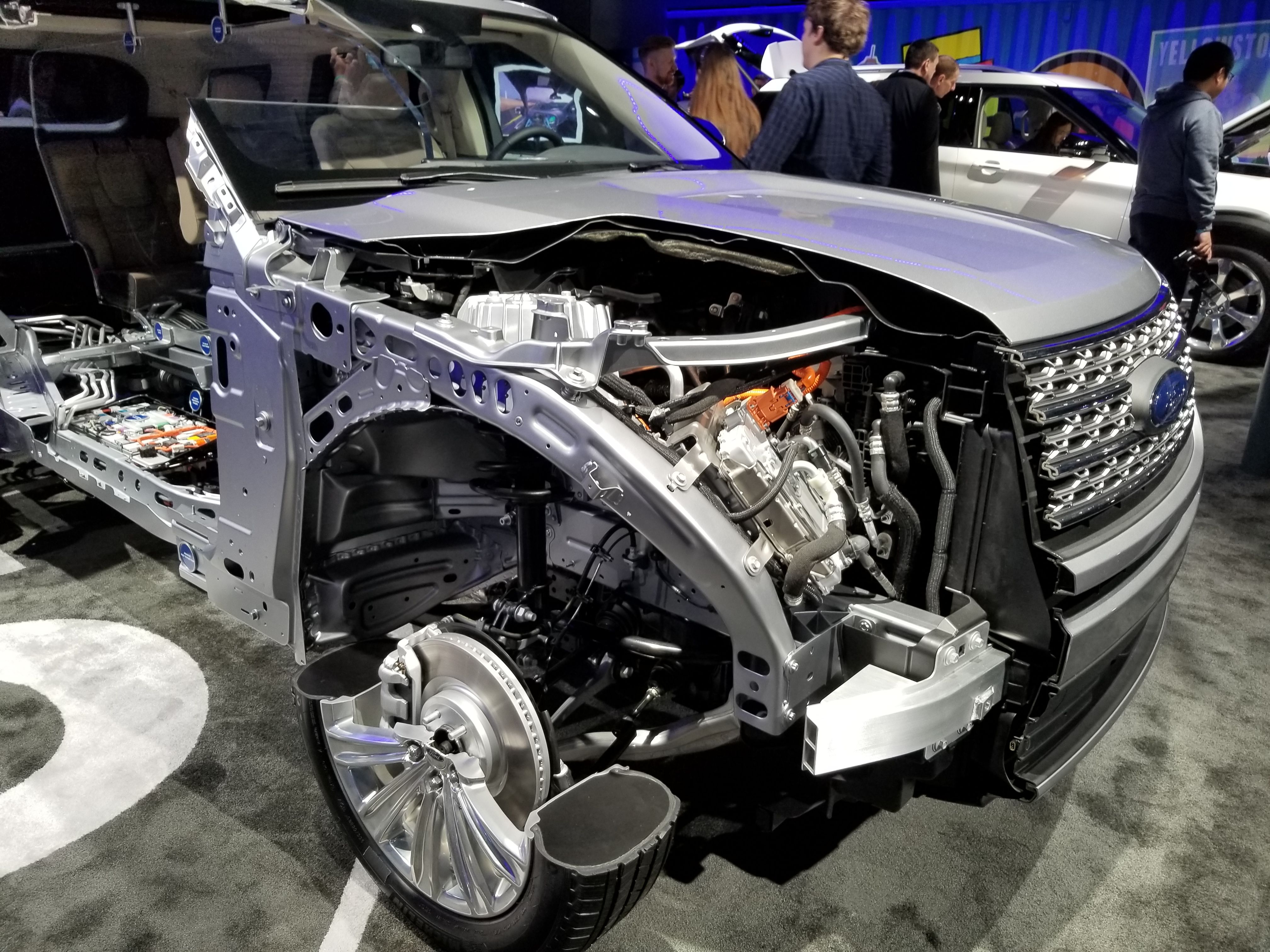Ford made somewhat of a surprise move at the 2019 Detroit Auto Show and introduced a couple more versions of the brand-new Explorer. Unveiled just last week, the Explorer came to Detroit in new ST and Hybrid trims. The latter features a rather weird drivetrain layout, especially given what FoMoCo offers in other hybrids.
The Explorer is offered with either a 2.3-liter EcoBoost four-cylinder or a new 3.0-liter EcoBoost V-6 in the non-hybrid setup. The electrified version, on the other hand, pairs the electric motor to a naturally aspirated, 3.3-liter V-6.
Making things weirder is that the 3.3-liter V-6, available in the F-150 pickup truck since 2017, is less efficient than the EcoBoost V-6 units. Precise EPA ratings aren't yet available beyond the estimated 500 miles combined, but it doesn't make much sense to go with a less efficient engine when you have a solid turbo in a similar SUV.
Although there are no mileage figures to compare, it doesn't make sense from an output standpoint either.
Seriously now, why would Ford go with a less efficient and less powerful drivetrain when it already has the good combo in the Lincoln Aviator, a rebadged Explorer? Was this choice made so that the Aviator benefits from a premium-like advantage in this department? If so, why didn't Ford pair the electric motor to a smaller EcoBoost V-6, like the 2.7-liter, or even a four-cylinder mill?
Further reading
2020 Ford Explorer Hybrid promises 500 miles range
2020 Ford Explorer ST has 400 HP, wants to be taken seriously as a performance SUV
Read our full review on the 2020 Ford Explorer.
Read our full review on the 2020 Lincoln Aviator Hybrid.
Read our full review on the 2016 Ford Explorer.
Six Generations of the Ford Explorer



